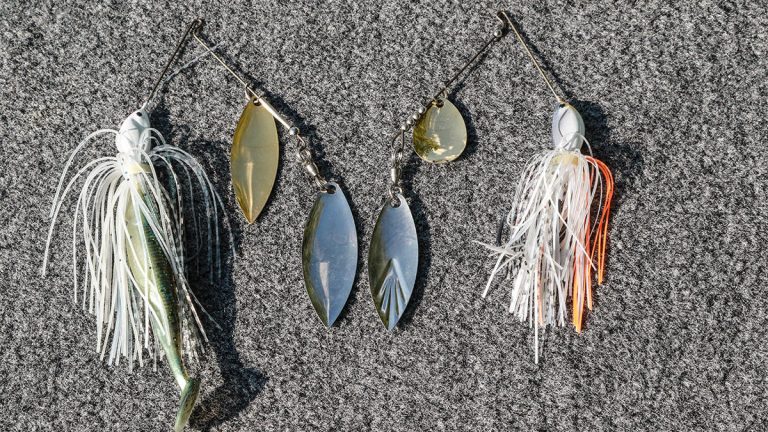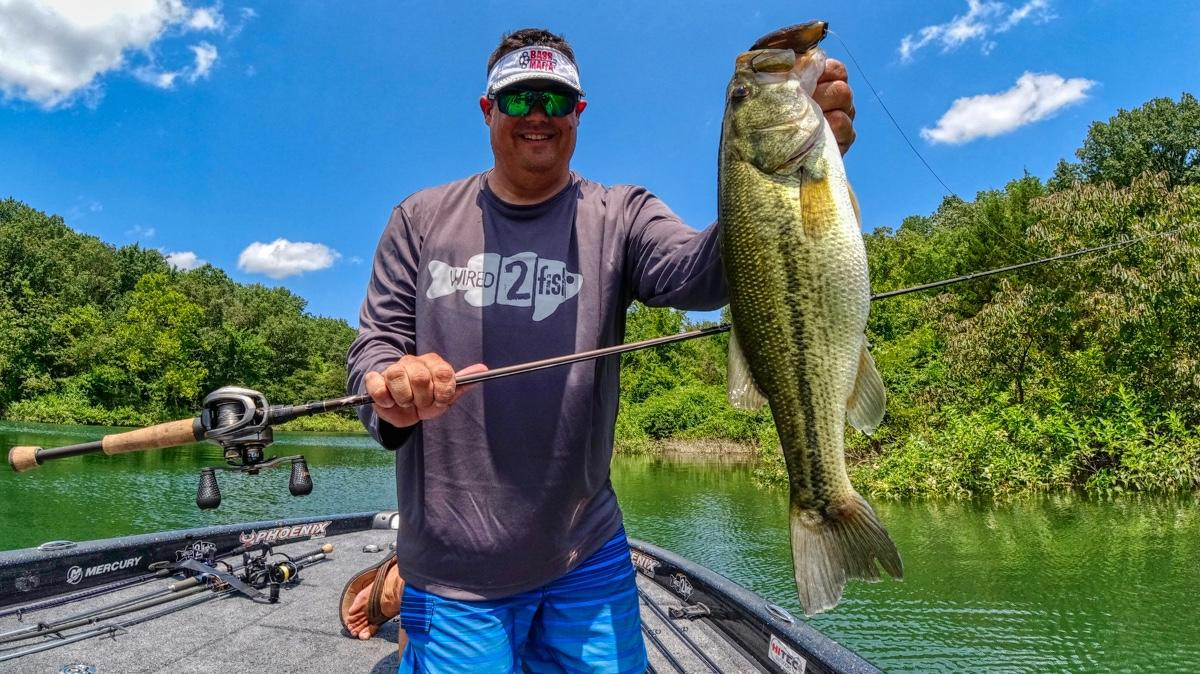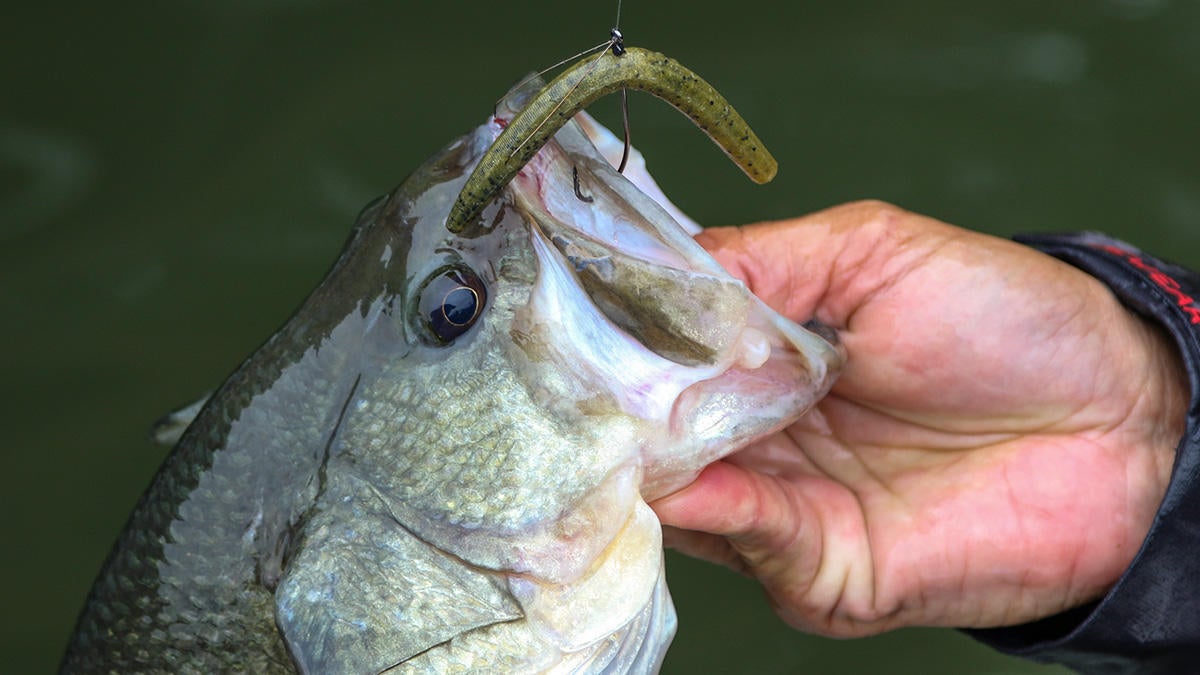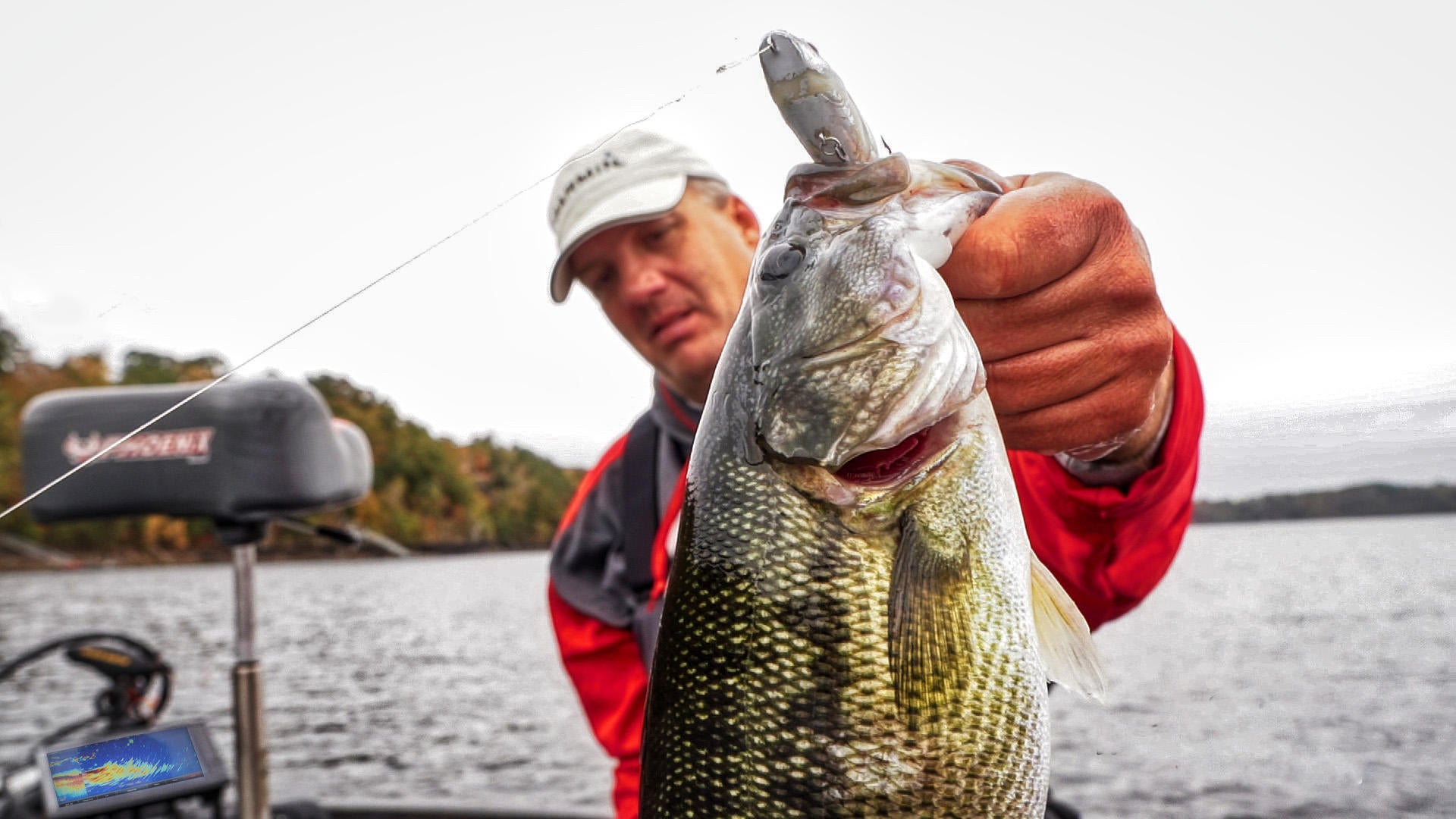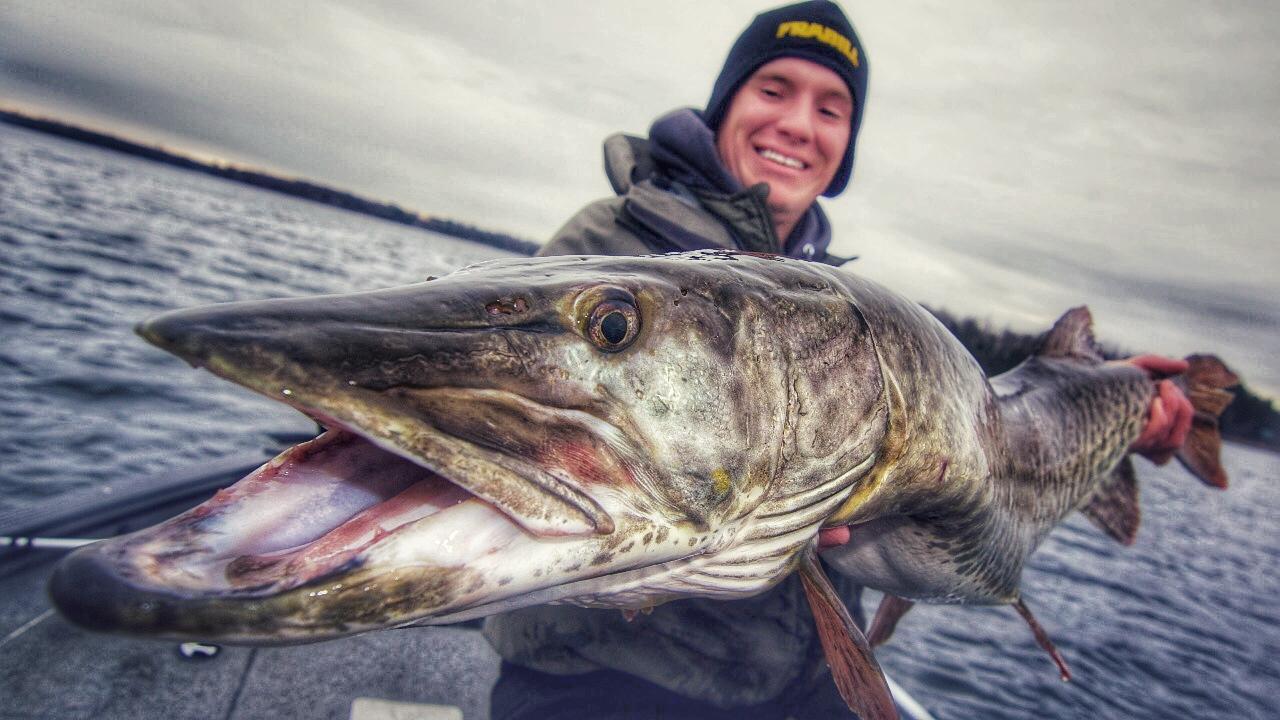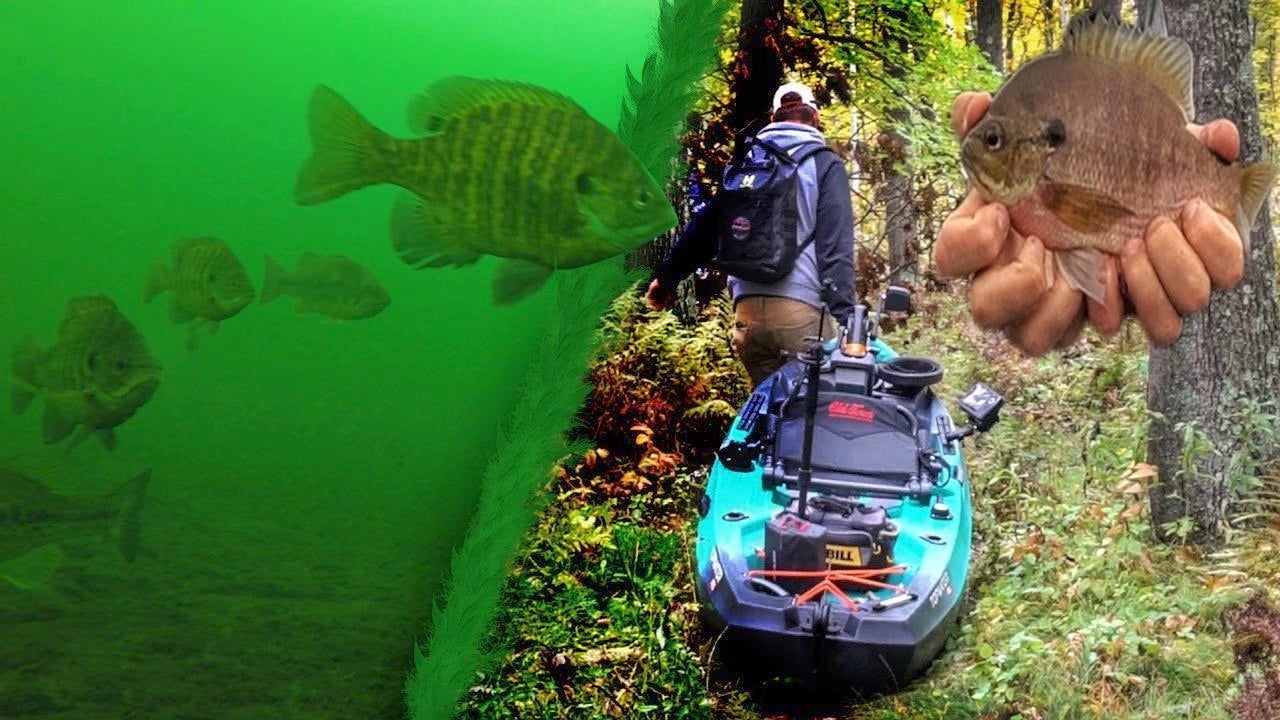Water color and temperature are Martens’ key metrics for blade choice. For the late-summer to early fall period, he uses a lot of smaller double willow-leaf setups to match the seasonally smaller baitfish.
The smaller willows also facilitate the faster retrieves Martens wants in the warmer water. If the water has some color to it, he’ll go with a Colorado/willow-leaf model.
“I’ll usually start with a small Colorado blade, but I’ll change the size based on how deep I’m fishing and what kind of drag I want (to affect bait speed),” Martens said. “As the water gets colder, that’s when I’ll go to a double-Colorado, or Indiana-Colorado.”
Martens encourages experimenting will blade sizes/style variations – as evidenced by his multiple spinnerbait boxes testing their capacities – but he stresses the importance of doing so with intention.
Teamwork makes the dream work: A general rule of thumb states that a larger Colorado blade tends to help in stained water or dim conditions, as increasing the “thump” gives the fish more vibration to track. Martens nods in agreement here, but points out how spinnerbait blades interact.
For this, picture cyclists drafting one another to manage air resistance.
“The size of a Colorado blade (in the top position) will do things to the willow-leaf; it will take water from it, add water to it,” Martens explained. “The bigger you go in the front, the less water the willow-leaf gets in the back.”
Such tweaks not only impact the amount of flash a willow-leaf emits, but also the balance of retrieve speed and running depth.
“If the fish want it really fast, then I’ll use a small Colorado blade on the front and a medium willow-leaf,” Martens said. “But if I want to slow it down, a lot of times, I’ll keep the same willow-leaf but I’ll go up a size or two in the Colorado in the front. That will slow the bait down at the same depth, so I can fish it slower and put out a little more vibration.”
Finishing touches: Martens’ preferences for blade shape also runs pretty deep, but he points to a key attribute for willow-leaf blades.
“A flat willow-leaf blade is wider than a cupped willow-leaf (of the same size), so it has a lot of drag, but not necessarily a lot of vibration,” Martens said. “Sometimes you want that drag (from a Willow-leaf) when you’re catching fish that are actually seeing the bait. You may want to keep the bait up shallower, or keep it up higher in the water column and that’s easier with a flat blade.”
Martens notes that he can also accomplish this depth strategy with cupped willow-leaves by using two larger blades. The decision, here, becomes a matter of overall bait size; what kind of profile does he want to present.





